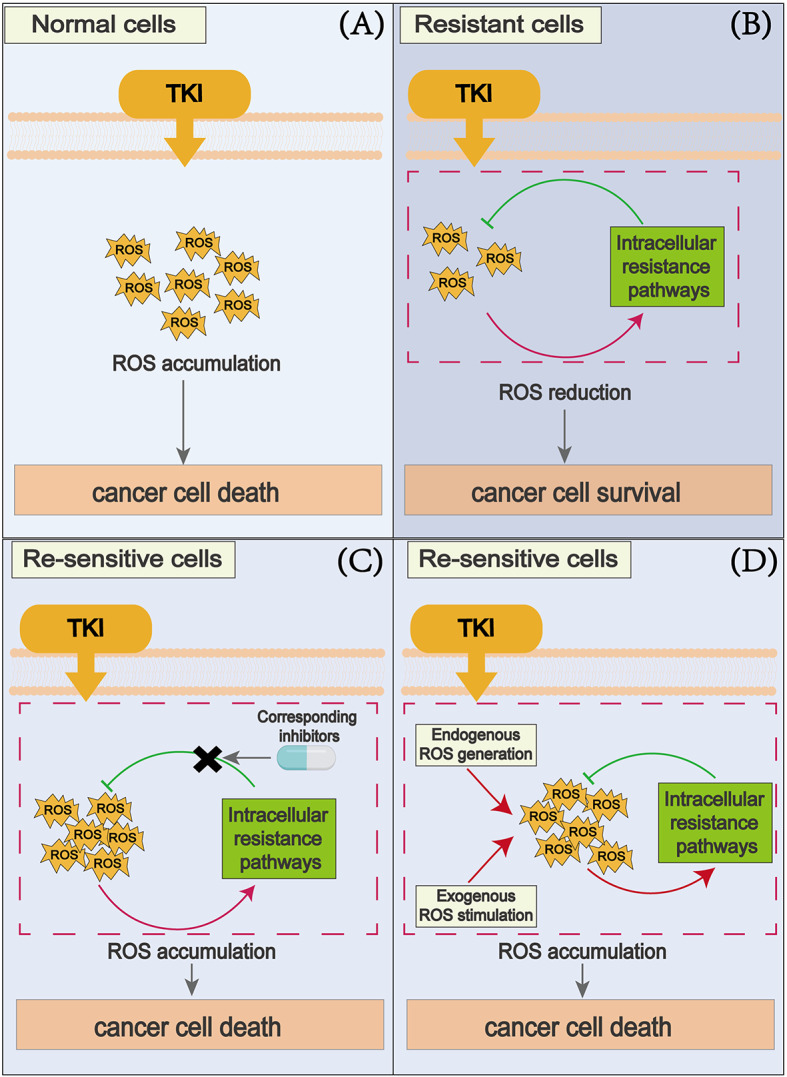- Record: found
- Abstract: found
- Article: found
Promoting reactive oxygen species accumulation to overcome tyrosine kinase inhibitor resistance in cancer

Read this article at
Abstract
Background
In tumor treatment, protein tyrosine kinase inhibitors (TKIs) have been extensively utilized. However, the efficacy of TKI is significantly compromised by drug resistance. Consequently, finding an effective solution to overcome TKI resistance becomes crucial. Reactive oxygen species (ROS) are a group of highly active molecules that play important roles in targeted cancer therapy including TKI targeted therapy. In this review, we concentrate on the ROS-associated mechanisms of TKI lethality in tumors and strategies for regulating ROS to reverse TKI resistance in cancer.
Main body
Elevated ROS levels often manifest during TKI therapy in cancers, potentially causing organelle damage and cell death, which are critical to the success of TKIs in eradicating cancer cells. However, it is noteworthy that cancer cells might initiate resistance pathways to shield themselves from ROS-induced damage, leading to TKI resistance. Addressing this challenge involves blocking these resistance pathways, for instance, the NRF2-KEAP1 axis and protective autophagy, to promote ROS accumulation in cells, thereby resensitizing drug-resistant cancer cells to TKIs. Additional effective approaches inducing ROS generation within drug-resistant cells and providing exogenous ROS stimulation.
Related collections
Most cited references151
- Record: found
- Abstract: found
- Article: not found
Lenvatinib versus sorafenib in first-line treatment of patients with unresectable hepatocellular carcinoma: a randomised phase 3 non-inferiority trial
- Record: found
- Abstract: found
- Article: not found
The NOX family of ROS-generating NADPH oxidases: physiology and pathophysiology.
Author and article information
Comments
Comment on this article
 Smart Citations
Smart CitationsSee how this article has been cited at scite.ai
scite shows how a scientific paper has been cited by providing the context of the citation, a classification describing whether it supports, mentions, or contrasts the cited claim, and a label indicating in which section the citation was made.

